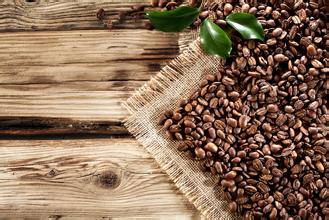Lanchio bean grinder grinding scale-coffee bean grinder scale adjustment
Lanchio bean grinder grinding scale-coffee bean grinder scale adjustment
Judge the quality of powder
To observe the coffee powder, the high-quality coffee powder should be powdered and gravel. If the coffee powder is soft, like flour, it means the powder is fine. On the contrary, if the coffee powder feels tough and rough, it means the powder is too coarse.
Adjustment course of bean grinder
Different bean grinders have different adjustment dials, so you should check the model of the coffee grinder and read the instructions carefully to determine the direction and strength of the dial. In general, if you keep in the habit of checking the settings of the bean grinder, you only need to make very small adjustments. As long as you move the turntable within 3 mm, you can change the thickness of the powder. Although 3 mm is a very small number, the grinding time of the same coffee beans will change by 3-5 seconds.
Determine the direction of adjustment you need (finer or thicker). Make sure there are enough coffee beans in the warehouse, and the valve between the warehouse and the sharpening knife is opened so that the coffee beans can fall smoothly into the grinding area.
Turn on the grinder for 10 seconds and discard the coffee powder (these are coffee powders that have not been adjusted).
Use the coffee powder to make a cup of coffee to ensure the accuracy of the steps of serving, flattening and pressing powder. The traditional method of making espresso (Ristretto) uses a water / flour ratio of 1:1 (i.e. 18 grams of coffee powder is used to make 18 grams of coffee) or 1:2 (i.e. 18 grams of coffee powder is used to make 36 grams of coffee), while a regular espresso uses a water / powder ratio of 1:2 (i.e., "Normale"). Test the quality of the coffee and the extraction time. Constantly adjust the dial to make the powder reach a perfect thickness.
The debugging of the electronic bean grinder mainly aims at two variables, the amount of powder and the degree of grinding. These two variables are mutual, and if you change one of them, the other will also change.
The ordinary electronic bean grinder adjusts the grinding and pulverizing time of the bean mill according to the pre-set amount of powder (please note that the amount of powder is adjusted by the mill based on time rather than weight). If you are not satisfied with the quality of your coffee, the first thing you need to do is to determine whether there is a problem with the amount of powder or the degree of grinding.
In general, the distance between the correct weight, flattened and powdered pressed powder and the outlet should be 5-6 mm. If the height of pressed powder is not in this range, you should try to adjust the powder output of the bean mill (that is, grinding and pulverizing time). When adjusting the amount of powder, the range of each adjustment should be between 0.2 and 0.3 seconds. After each adjustment, you need to re-test the quality of the coffee.

Important Notice :
前街咖啡 FrontStreet Coffee has moved to new addredd:
FrontStreet Coffee Address: 315,Donghua East Road,GuangZhou
Tel:020 38364473
- Prev

The difference between flat knife and ghost tooth bean grinder-the knife of hg one bean grinder is not installed correctly
The difference between flat knife and ghost tooth bean grinder-hg one bean grinder knife installation is not from the grinding point of view, is it the more uniform, the less fine powder is better? This is not the case. As mentioned just now, each knife head has its own advantages and disadvantages. If it is absolutely uniform and there is no fine powder at all, the taste of coffee will be very mediocre, lack of flavor and layering, and it is very easy to extract too much. If it's too uneven,
- Next

How to solve the problem of Powder leakage in Delong Coffee Machine
How to solve the problem of Delong coffee machine powder leakage instructions 1. When cleaning the coffee dregs receiving box, it must be emptied first. 2. The water tank of Delong coffee machine needs to be cleaned regularly. 3. The water level indicator buoy is red, which can show the water storage inside the drip tray. When the water level indicator buoy is clearly visible, needles can be used to dredge it. 4. Periodically
Related
- What is the Philharmonic pressure? How to use Philharmonic pressure to make delicious coffee
- Why does a hand grinder have more fine powder than an electric grinder?
- In addition to the hot mom, what is the difference between the versions of EK43 | ditting and Mahdi ek43?
- What kind of equipment do you need to make coffee by hand? Introduction to novice starter cooking equipment tools
- Espresso needs to be ground how thick and thin scale entry Italian Coffee Machine Bean Grinder investigation and Grinding course
- How much does it cost to open a small private cafe? How much does it cost to learn coffee? How to operate it?
- The difference between the flavor characteristics of hand-brewed coffee and coffee maker is hand-brewed coffee really better than coffee maker? Can I use a coffee machine to make coffee beans by hand?
- The difference between 01 and 02 of hario v60 filter cup what is the difference between 01 and 02 filter cup opening and cooking flavor
- What's the difference between the smart cup and the French kettle? Which is better, the French kettle or the Smart Cup?
- What's the difference between a smart cup and a V60 filter cup? The difference between the taste of smart cup and hand-brewed coffee

